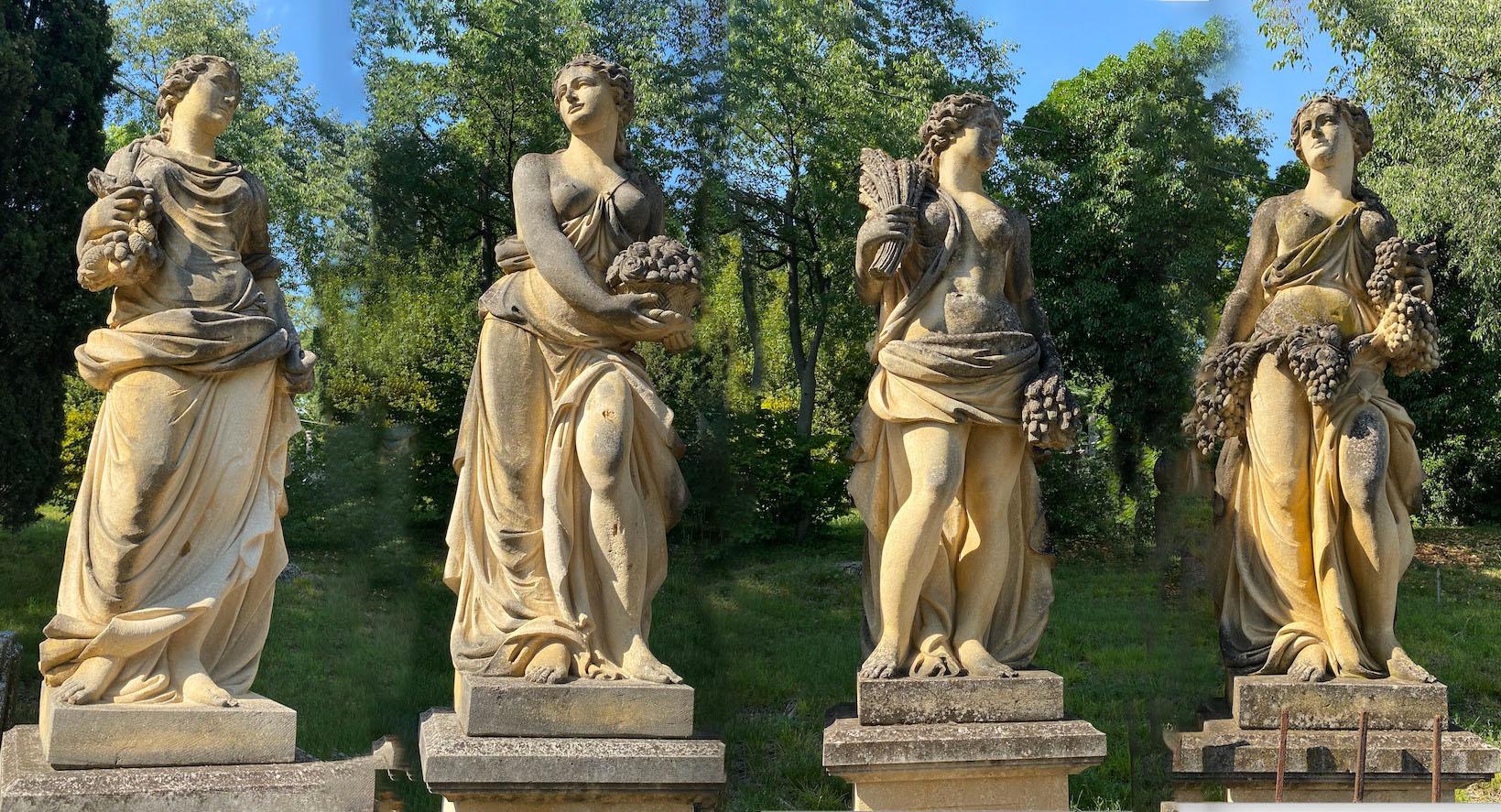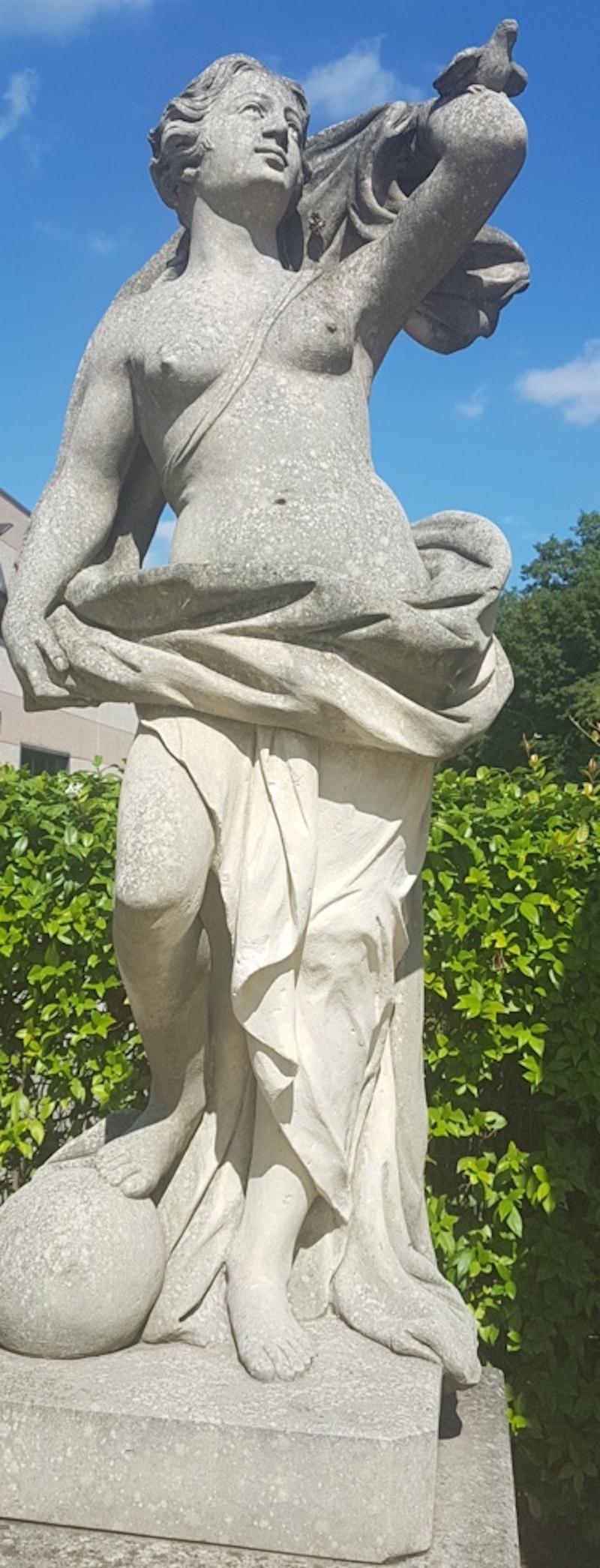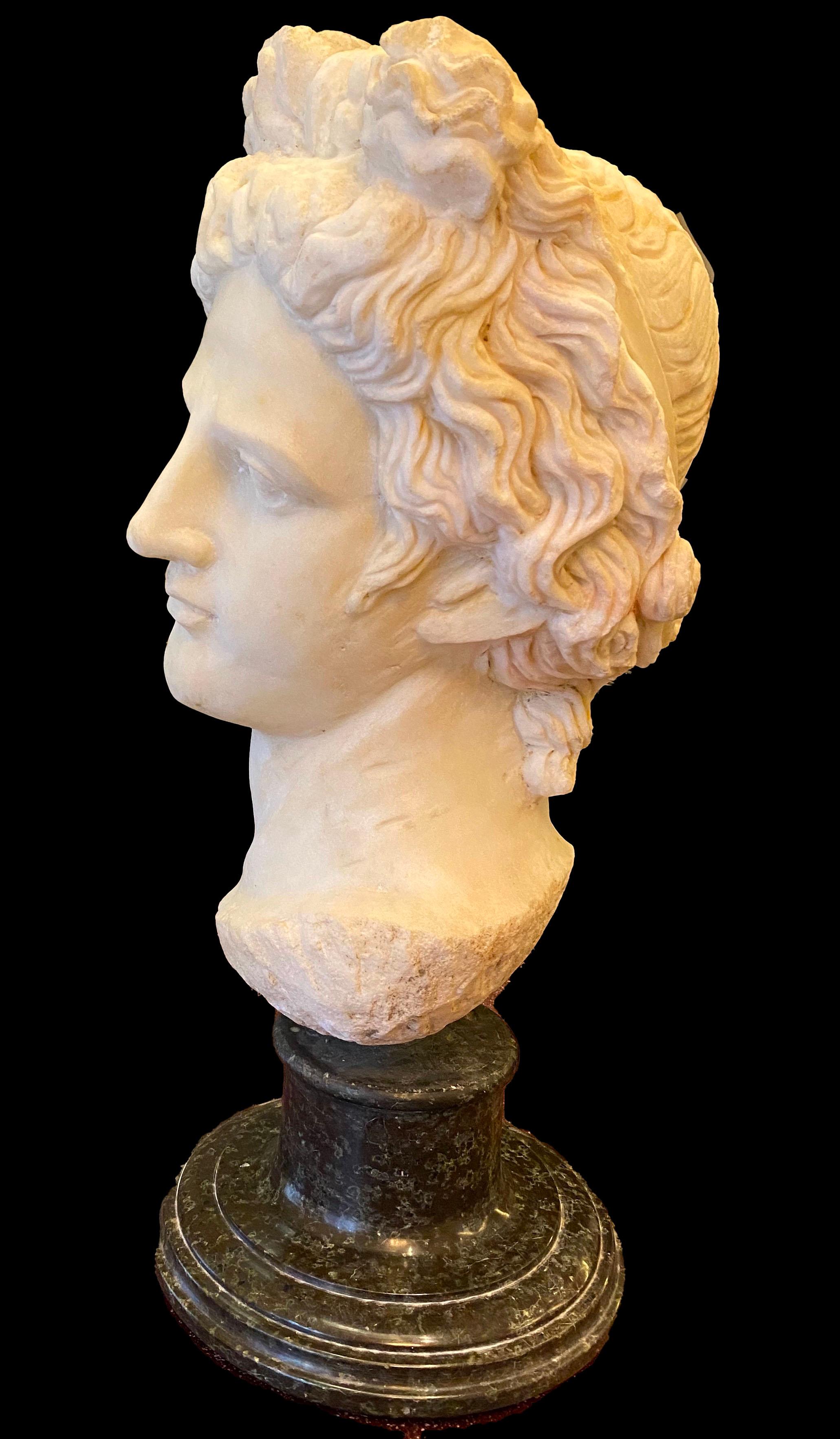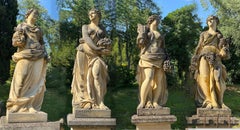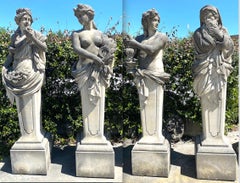
Early Ptolemaic Egyptian Limestone Relief depicting a Pharaoh
View Similar Items
Video Loading
1 of 7
UnknownEarly Ptolemaic Egyptian Limestone Relief depicting a PharaohCirca 305-250 BC
Circa 305-250 BC
About the Item
- Creation Year:Circa 305-250 BC
- Dimensions:Height: 16.15 in (41 cm)Width: 14.97 in (38 cm)Depth: 1.97 in (5 cm)
- Medium:
- Period:
- Condition:
- Gallery Location:London, GB
- Reference Number:1stDibs: LU135726943622
You May Also Like
- Set of Extraordinary Italian Stone Statues Representing the Four SeasonsLocated in Rome, ITMonumental classically draped female figures and their distinguishing symbols on a square base. Autumn, winter, spring and summer. Measures: Heig...Category
20th Century Academic Figurative Sculptures
MaterialsLimestone
- Four Season Extraordinary Set of Italian Stone Caryatids SculpturesLocated in Rome, ITFour Caryatids sculptures with classically draped figures and their distinguishing symbols. Autumn, winter, spring and summer. Measures: Height wi...Category
20th Century Academic Figurative Sculptures
MaterialsLimestone
- Four Season Extraordinary Set of Italian Stone Term Figure SculpturesLocated in Rome, ITFour Term Figure sculptures with classically draped figures and their distinguishing symbols in carved Vicenza stone. Autumn, winter, spring and summer. Measures: Height with squar...Category
20th Century Academic Figurative Sculptures
MaterialsLimestone
- Set of Extraordinary Italian Stone Statues Representing the Four SeasonsLocated in Rome, ITMonumental classically draped female figures and their distinguishing symbols on a square base. Autumn, winter, spring and summer. Measures: Height of the sculptures cm 190 with squ...Category
20th Century Academic Figurative Sculptures
MaterialsLimestone
- Boris Lovet-Lorski Limestone Art Deco Head, circa 1930By Boris Lovet-LorskiLocated in New York, NYWhite stone head in the art deco style. Born in Lithuania at the end of the nineteenth century, Boris Lovet-Lorski studied art at the Imperial Academy of Art in St. Petersburg before working briefly as an architect. He immigrated to New York in 1920 and became an American citizen five years later. His sculptures epitomize the ideals of the Art Deco decades: comprised of sleek lines and smooth surfaces, the streamlined compositions reflect the new technological forms of the machine age. Despite their modernist treatment, Lovet-Lorski’s elegant, stylized figures reference both ancient and classical sources and are characterized by a universal and serene sensibility. Concentrating on figural busts, familial groups, and standing female nudes as his subject matter, the artist rendered them in a variety of media. The materials range from the traditional bronze and marble to exotic woods and unusual stones; each is carefully selected so that its surface texture and color contribute to the emotive aura of the work. Carved out of a block of limestone, Untitled (Head) depicts a female visage nearly androgynous in its idealization. The delicate features of her face, the long, straight nose, thin pursed lips and high cheekbones, are made even more diminutive by the massive bulk of the stone that serves as their backdrop. The prominent widow’s peak of her hairline and the strong arch of her brow, two of Lovet-Lorski’s most distinctive characteristics, are elongated to accentuate the linear rhythms of the composition. The layers of her hair are delineated by stepped striations reminiscent of archaic precedents, which meld into structural columns and connect the form architecturally to the stone’s mass. Unlike the majority of Lovet-Lorski’s sculptures, in which the heads of the figures are tilted to the side or downward to convey a pensive mood, the woman in Untitled (Head) looks straight ahead. Her frontal positioning gives the composition a nearly perfect symmetry, in turn endowing the work with a still, eternal sensibility. The notched surface of the surrounding limestone stands in sharp contrast to the smoothness of her skin. In the twenties, the artist tended to finish his sculptures to a highly polished degree of refinement, but in the thirties he began to experiment with contrasts of texture and the aesthetic of the fragment. In this respect, the work is vaguely evocative of Egyptian funerary sculptures, in which the figures were carved with an eye for three-dimensionality but were left intact in a larger piece of stone to give them physical durability and permanence. Embodying classical ideals of stoicism and universal beauty, the sculpture ultimately exudes a surface allure that is difficult to resist. A similar example of this approach can be seen in the 1937 sculpture Diana, which resides in the permanent collection of the Hirshhorn Museum and Sculpture Garden, Washington D.C. Carved from a piece of black Belgian marble, the work is a stylized bust of the Greek goddess Diana...Category
1930s Figurative Sculptures
MaterialsLimestone
- "The Girls" Limestone Caryatid PairLocated in Austin, TXBy Bob Ragan Two Indiana Limestone caryatid sculptures Dimensions and Weight for each: 73" x 21.5" x 20.3", 2000 lbs About the Artist: Bob Ragan is...Category
21st Century and Contemporary Figurative Sculptures
MaterialsLimestone
Recently Viewed
View AllMore Ways To Browse
Egyptian Limestone
Antique Macedonia
Diadem Crown
Greek Style Wall Relief
Al Thani
The Al Thani
Al Thani Collection
The Al Thani Collection
Egyptian Limestone Relief Depicting A Pharaoh
Golek Puppet
Thomas J Evans
Erekle Tsuladze
David Hostetler
Bronze Yoga Figure
Indonesian Golek Puppet
Unknown Artist Abstract White Stone Sculpture
Wayang Golek
Arman Saxophone
